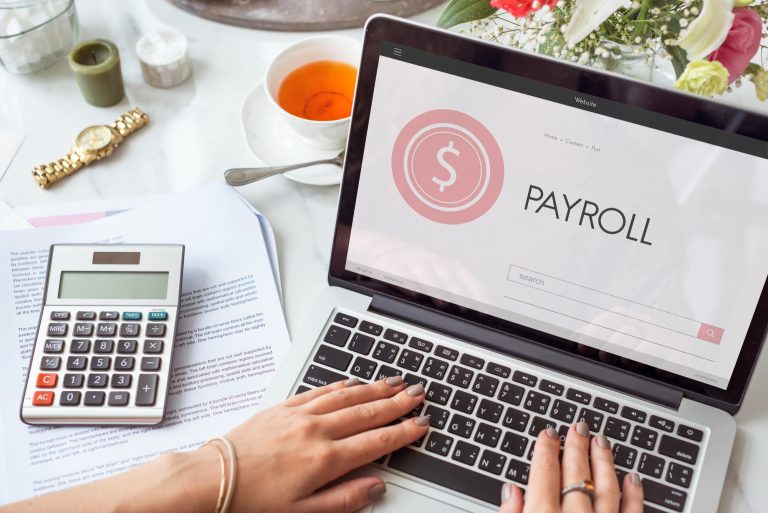What is PF in Salary? A Complete Guide to Provident Fund and Its Benefits
Ever wondered why your CTC doesn’t match the actual salary you get? Most of the people may know but few are still unaware of where their money is being deducted and what is PF in salary. It is important to understand the various components that make the salary of an employee. Understanding what is PF and ESI in salary, how the PF works, how much you and your employer contribute, and the benefits you get can help you make the most of this scheme. Moreover, make sure to regularly monitor your PF balance, plan your withdrawals wisely, and take advantage of this valuable employee benefit. In this blog, we will guide you through what is PF in salary, what is PF account number, and what is PF and ESI in salary.


What is PF?
PF or provident fund is a mandatory saving plan, especially a retirement benefit scheme for employees to provide them funds that can be used after retirement. PF is deducted from an employee’s salary and a specific percentage is deducted from the employer’s side. However, this is not just a deduction, instead, it is an important saving tool for the employees. The provident fund falls under the Employees Provident Fund Organization under the Ministry of Labour and Employment. Over time, the amount grows into a big amount which can be used after retirement or in case of an emergency. Companies with more than 20 employees must sign up for an Employees’ Provident Fund.
What is PF Account Number?
PF account number is a 22-digit unique alphanumeric number, provided by an employer to the employee when their EPF account is opened. This digit contains the details of an employee, organisation, and state. Moreover, the activities of an EPF account are maintained by the regional EPF office.

Do you want to know more about our hihellohr Software?

How Does PF Work?
In the Provident Fund, an employee and an employer both make a contribution as per a fixed percentage of the employee’s salary to the Fund.
-
Employee Contribution:
The employee has to make a contribution of 12% of his basic salary to his PF account on a monthly basis. Additionally, the same gets deducted automatically from the employee's salary.
-
Employer Contribution:
The employer also contributes 12% of the employee's basic salary. However, only 8.33% goes into the Employee Pension Scheme, and the remaining 3.67% is deposited into the PF account.
-
Investment:
Investment is made for government security, bonds, and equities.
-
Withdrawal:
Employees can withdraw their money anytime after their resignation.
Types of Provident Funds
There are three major types of Provident Funds operational in India:
-
Employees' Provident Fund (EPF)
EPF is the most common type of provident fund, covering all employees who work in companies with a total of 20 or more employees. Both the employer and the employee contribute to the fund, and any withdrawal is allowed only at retirement or under specific conditions, such as a medical emergency.
-
Public Provident Fund (PPF)
PPF is one of the Government saving schemes for all employees working in the organization working with 20 or more employees and also for self-employed people.
-
Exempted Provident Fund
Benefits are similar to Employees Provident Fund, but in this case, the employers maintain their PF scheme themselves under private trusts.

Benefits of Provident Fund to Employees
Employees working in the private and government sectors can take advantage of this scheme. PF comes with a number of benefits that help employees plan for a secure future and ensure financial help in times of emergency. Let’s look at some of the key features:
1. Retirement Savings
One of the biggest advantages of PF is that it helps you to save for retirement. Over time, the monthly contributions made by both the employee and the employer make a big amount meant for retirement, which can be withdrawn when the employee retires and in a time of emergency.
2. Pension Benefits
As a PF holder, to receive a pension after 58 years of age you have to contribute 8.33% of your salary to EPS on a monthly basis. However, for that, you have to first contribute to the PF account for at least 15 years. This pension works as a regular income in the retired life of an employee.
3. Tax Benefits
The employee and employer contributions to Provident Fund are free from taxation: Under Section 80C of the Income Tax Act, 1961, the employee’s contribution is deductible. The interest on the balance in the PF, is also tax-free, but with conditions like a continuous employment for at least 5 years.
4. Interest on PF Contributions
The interest rate on the balance amount in the PF account is declared by the government every year. For the financial year 2023-24, it is 8.15%. The interest is changed annually, which enhances your savings over time.
5. Emergency Withdrawals
Workers are allowed to withdraw from their PF accounts in various emergencies, such as:
- Medical emergencies for self or family members.
- Higher education.
- Purchase or renovation of a house.
- For marriage expenses.
6. Free Insurance
In case an employee dies during the job, they are provided with free insurance of up to 7 Lakhs under the scheme of Employee Deposit Linked Insurance scheme. However, to claim death cover the employee must contribute to the insurance premium.

Steps to Withdraw Money From Provident Fund
PF amount can be withdrawn from after retirement or even earlier with few conditions. PF can be withdrawn in two ways i.e. online or offline. Here is the step-by-step guide for PF withdrawal:
Online Withdrawal:
If you want to withdraw your money online follow the below steps:
- Log in to the EPFO portal with your UAN (Universal Account Number).
- Thereafter, click on the ‘Claim Form-31, 19 & 10C & 10D’ option under the ‘Online Services’ tab.
- Fill in the required details and submit the form.
The withdrawal request will be processed, and the amount will be credited into the bank account of the employee.
Offline Withdrawal:
Employees can also submit their withdrawal form physically to the regional office of the EPFO by submitting Form 19 for final settlement or Form 31 for partial withdrawals.
Conditions for Withdrawal
- Full withdrawal is allowed when the employee reaches the retirement age of 58 years.
- The employee can also withdraw the PF balance in case of unemployment beyond 2 months.
- In case of a medical emergency, purchasing a new house, education, or marriage, partial withdrawals are allowed.

Conclusion
Provident Fund is a strong and useful weapon that gives employees long-term savings along with important benefits related to pension, insurance, and relaxation from taxes. From retirement security to financial help in critical times, here are several advantages of a PF that every employee should know.
Related Articles:




